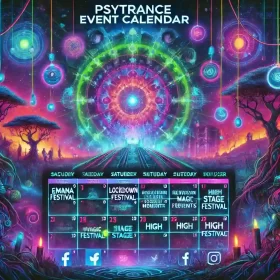Holotropic Breathwork is a therapeutic and consciousness-exploration technique developed by Stanislav Grof, a Czech-American psychiatrist. It is based on the idea that deep, accelerated breathing, combined with music and the support of facilitators, can induce altered states of consciousness without the use of psychedelic substances. During a Holotropic Breathwork session, participants lie down on mats, blindfold themselves, and begin to breathe deeply and consciously, which can lead to profound, revelatory, and therapeutic experiences. The technique is used as a tool to explore the unconscious, resolve trauma, access spiritual insights, and promote personal growth. It is often practiced in groups, with the support of trained facilitators. The term “holotropic” refers to the idea that the experience can lead to greater integration and harmony of mind, body, and spirit.
The Science Behind Holotropic Breathwork
The Science Behind Holotropic Breathwork is based on the understanding that consciously modifying one’s breathing can profoundly influence one’s psyche and state of consciousness. This therapeutic technique seeks to explore the effects of deep, accelerated breathing, in conjunction with mindfulness, as a means to access altered states of consciousness and promote emotional and spiritual healing, providing a unique perspective on the interconnection between breath and mind.
Breathing is an automatic but vital daily act. We spend most of our time not realizing that we are breathing, and how we are breathing. Busy and entertained by the processes of the mind, we barely notice the intelligence of the body, which takes care of this fantastic and vital process all by itself. But a few seconds without air are enough, and the vitality of the process becomes instantly obvious.
A Vital and Unconscious Act
In scientific contexts, breathing is defined as the process of inhaling and exhaling air, during which the exchange of gas molecules occurs between the body and the environment – we take in more oxygen and exhale more carbon dioxide, for example, while plants do the opposite.
Breathing: More than Exchanging Gases
But in broader contexts, we attribute to the word breathe countless other meanings, such as feeling relief, resting, reposing, or expressing, manifesting and revealing: “everything here breathes joy.”



The Duality of Breathing
The other side of the coin is shortness of breath, which is associated with bad things, discomfort, suffocation, panic, disagreement and death.
The Deep Connection Between Breath and Mind
This brief reflection gives us a glimpse of a profound realization that has been systematically explored by various cultures for millennia. The act of breathing is central to our entire physiology and psyche. And various techniques have been developed, from the simplest, practiced by anyone in moments of discouragement – “calm down, breathe!” – to more sophisticated ones, such as the pranayama exercises of yoga and the various breathing techniques that form one of the central pillars of meditative practices.
The Art of Breath Control
By focusing on our breathing, and voluntarily modifying it, deepening it, speeding it up or slowing it down, or even stopping for a certain period, we can have an effect on our psyche. Even when this is not the goal, the result is evident: divers often feel the relaxing and mind-opening effects while underwater, even if they do not realize that they are, in a way, meditating, because the concentration on breathing has to be intense.
Stanislav Grof and the Breathing Revolution
Attention to breathing was one of the brilliant ideas of Stanislav Grof, a Czech psychiatrist living in the USA, back in the 1960s. Grof was the last researcher to end his research with psychedelic substances after the prohibition, which came into force in the USA in the late 1960s. After this setback, which ended what some still consider “the golden age of psychiatry”, Grof went through a period of reevaluation of his discoveries and professional directions: he conducted thousands of therapeutic sessions with LSD and archived countless papers and documents about his patients – as well as thousands more provided by his colleagues.
Exploring Consciousness with Breathing
This review took place over a period of several years, during which Grof participated in and organized unique and unprecedented seminars at the Esalen Institute in California. Those interested in the phenomenon of consciousness in a broad and non-reductionist way met periodically in a telluric location. Monks, scientists, doctors, gurus, martial arts masters, artists, scientists, businessmen, explorers, etc. All came together with the purpose of exploring, learning and developing new techniques for the safe experience of extraordinary states of consciousness.
Holotropic Breathwork: A Profound Journey
One of the results of this journey was the creation of the Holotropic Breathwork technique by Stan Grof and his wife, Christina Grof. It is an approach to self-exploration and therapy that can be experienced in private sessions, but is most commonly practiced in groups. Participants form pairs. While one “breathes,” the other takes care of the patient. And the trained team is on standby, circulating around the room, attending to cases of need as they arise. The breathing here is not the automated and unconscious breathing of everyday life. It is focused, attentive, conscious breathing. The patient breathes deeply and quickly, lying on a mat, with his eyes closed or blindfolded.
Learn more about this topic by watching some videos.






